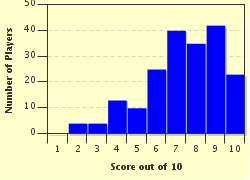Quiz Answer Key and Fun Facts
1. What left-handed inventor produced workable drawings of gliders and parachutes centuries before they were built?
2. Which of the US Founding Fathers used his keen left-handed insight to design the lightning rod and common bi-focal?
3. What man known as the "father of the modern assembly line" was left-handed?
4. What left-handed college drop-out, born in Seattle Washington, revolutionized the way the world uses computers?
5. What left-handed physicist, balloonist and inventor created the deep sea submersible vehicle called the bathyscaphe?
6. What left-handed inventor was issued over 1,000 US patents but was removed from elementary school because his teachers thought him "addled"?
7. What left-handed architect, engineer, politician and writer invented the wheel cypher for encoding messages, and the right-angle based moldboard for plows?
8. What left-hander created the first working reflecting telescope, proved the existence of the color spectrum of light, devised the basics of calculus and explained the orbit patterns of celestial bodies?
9. What left-handed Englishman devised code-breaking schemes for the Allies during World War II, was a pioneer in the development of high speed supercomputers, but was convicted of "gross indecency" in 1952 and committed suicide in 1954?
10. What left-handed scientist/peace activist is credited with "inventing" molecular biology and is the only person to win two *solo* Nobel Prizes?
Source: Author
adam36
This quiz was reviewed by FunTrivia editor
bloomsby before going online.
Any errors found in FunTrivia content are routinely corrected through our feedback system.

